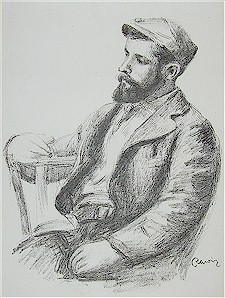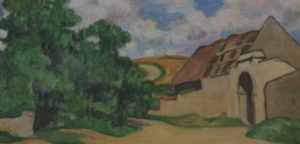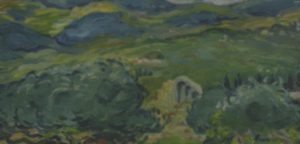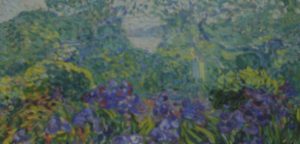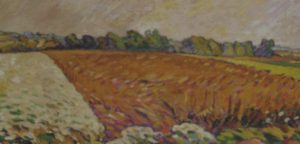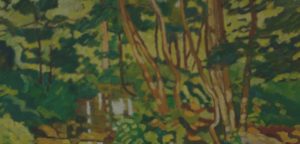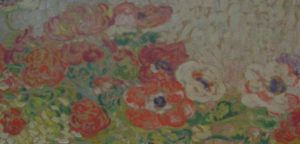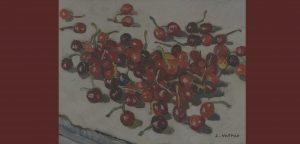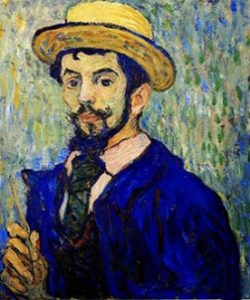The artist was born on August 8, 1869 in Dieppe, France.
1869 - 1952
Louis Valtat
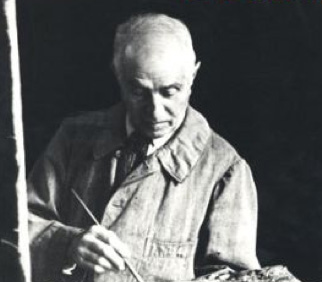
description
A French artist and engraver, a representative of Fauvism.
His father was an amateur artist and instilled in his son love for fine art. The future artist studied at Lycee Hoche in Versailles, where he lived with his parents.
Louis Valtat was never a formal member of the Fauvist group, but the key features of his work allow him to be referred specifically to this movement. The artist rarely visited Paris, but it did not stop him from keeping abreast of all the artistic novelties and taking part in various exhibitions: the Salon of Independent, the Autumn Salon, the Vienna Secession, the Free Art exhibitions in Brussels, and the Moscow exhibition – 1908. Louis Valtat also collaborated with Henri de Toulouse-Lautrec in decorating the Paris theater “L’Oeuvre” in 1894. Thanks to his close acquaintance with the collector A. Vollard, he gained popularity among his compatriots abroad. The creativity of the artist is considered a transition between Impressionism and the new aesthetics of the twentieth century, which the work of Henri Matisse embodies.
Key ideas:
– Louis Valtat can be called a harbinger of Fauvism. He began to use open colors and a simplified construction in his canvasses long before the famous Autumn Salon in 1905 announced the birth of a new style, the art of “wild” or Fauvism. The natural sense of color and the tendency to use contrasting shades formed the artist’s individual style, which reflected the general tendencies of French painting of the late 19th century.
– The artist is known primarily for his landscapes. He liked to depict the southern coast of France, the views of Normandy or summer gardens with women and children. His paintings are filled with sunlight; they differ in calm, peaceful mood and smooth wavy lines.
– Unlike Post-impressionists and most Fauvists, Valtat rarely used local spots filled with pure color. His painting consists of the separate strokes of contrasting shades, as in the works of Signac and other pointillists; although these strokes are large enough and form a single color spot in a distant view.
– In addition to landscapes, the artist paid much attention to portraits and still lifes. He often portrayed his wife Suzanne resting in the house or playing with the child on the street. At the end of his life, the artist bought a mansion in the small town of Choisele, where he created a chic garden. He painted colorful still lifes with flowers and fruits from the garden and often invited fellow artists to his estate.
1869
1886
1890
1893
1894
1897 - 1898
1899
1900
1905
1906
1924
1952
The birth of the artist
He applied for admission to the School of Fine Arts in Paris
He applied for admission to the School of Fine Arts in Paris and began his studies at the Academy of Julian, where he met A. Andre and P. Bonnard.
Won a money prize
Won a money prize, for which he organized his workshop on the street de la Glazier in Paris.
For the first time, he took part in the Salon of Independent
For the first time, he took part in the Salon of Independent, where he presented several paintings depicting the streets of Paris. His debut did not go unnoticed: critics noted the artist’s work with positive reviews.
Decorated the theater "l'Oeuvre"
Decorated the theater “l’Oeuvre” in collaboration with Toulouse-Lautrec and with the help of Albert Andre. In the same year, graphic works and paintings were exhibited at the Salon des Cent.
Held a winter season in Agay
Held a winter season in Agay, a small fishing village, and then in Antera, a few kilometers to the south; thanks to Renoir’s friendly recommendation, Ambroise Vollard signed an agreement with the painter, buying almost all of his works over the next 10 years.
L. Valtat presented a series of twenty of his paintings
Paul Signac organized a joint exhibition at the gallery of Durand Ruel, where L. Valtat presented a series of twenty of his paintings.
Participated in the Brussels exhibition "Free Aesthetics"
Participated in the Brussels exhibition “Free Aesthetics”. In 1903, he participated in the Vienna Secession.
The artist's paintings were presented at the famous Autumn Salon
The artist’s paintings were presented at the famous Autumn Salon together with the works of Matisse, Derain, Vlaminck and other Fauvists.
Presented his paintings at the Kunst Ersnt Arnold in Dresden
Presented his paintings at the Kunst Ersnt Arnold in Dresden. In addition, he exhibited his works in Berlin, Budapest, and Prague. In 1908, he presented them at the Tretyakov Gallery in Moscow.
Bought an estate in Choiseul
Bought an estate in Choiseul, where he mainly studied still life and flower compositions.
The death of the artist
He died on January 2, 1952 in Paris.

